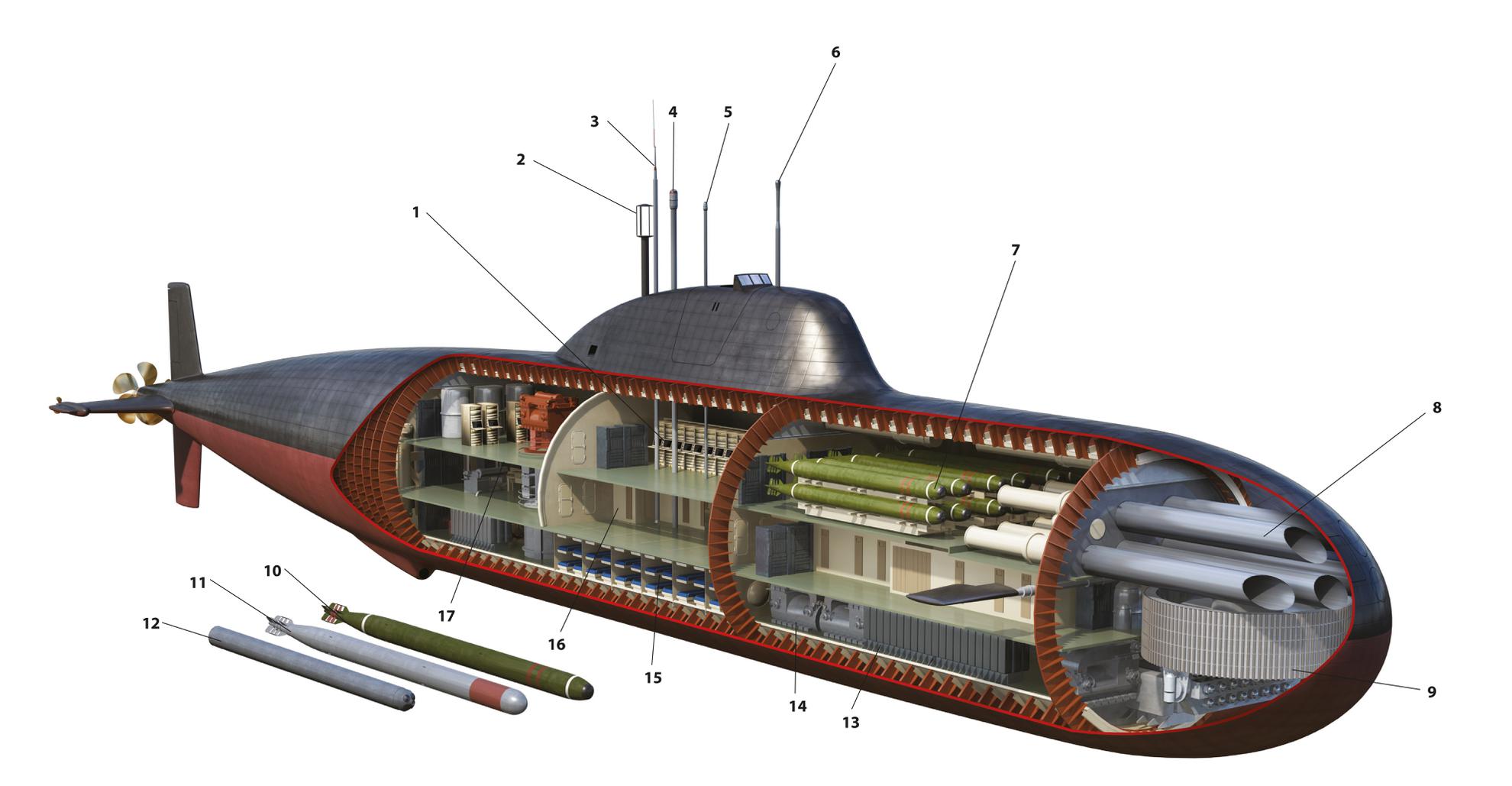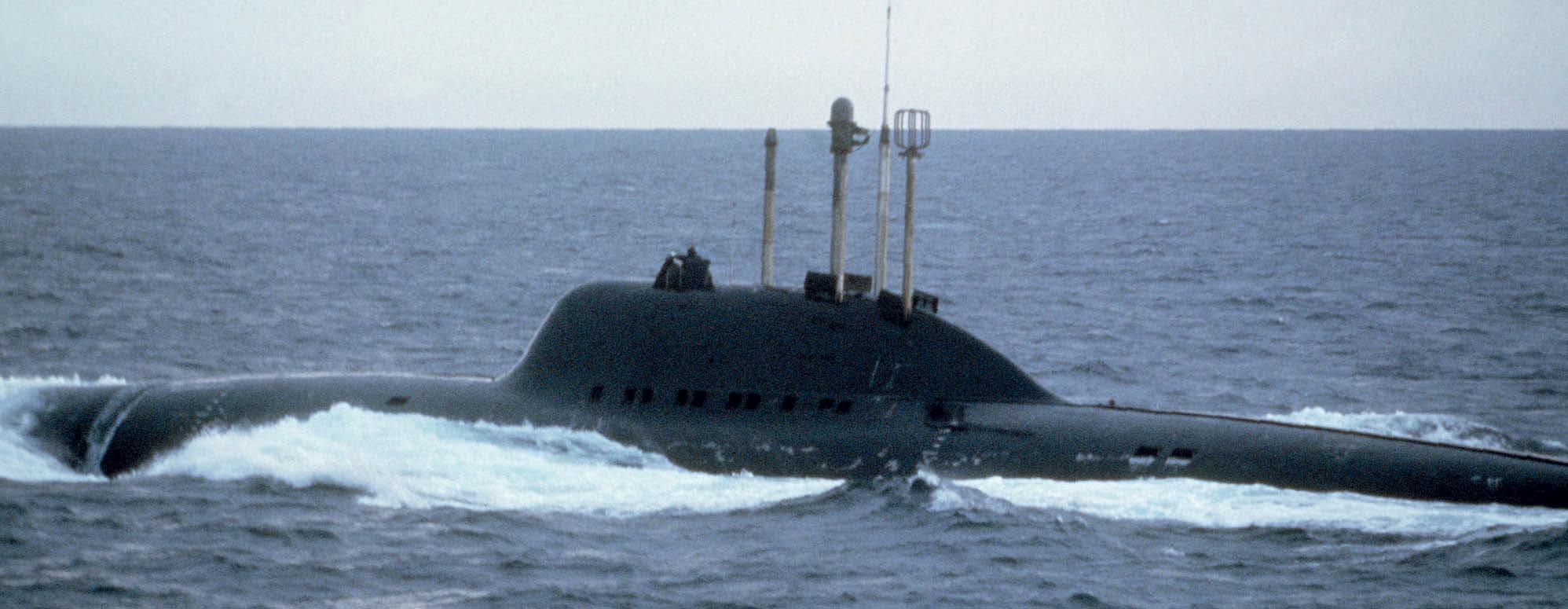
This cutaway illustration shows an Alfa class submarine. The design incorporated three highly innovative elements. The first was the use of a liquid-metal reactor, similar to that which had been used in the single Project 645 submarine. This provided greater propulsion efficiency. Second, the submarine’s hull was constructed out of titanium alloy. This provided greater strength compared to steel and in practice meant 30 per cent lower mass (resulting in lower displacement and greater speed), a reduction in the boat’s magnetic field (and therefore its vulnerability to mines), and additional corrosive resistance, meaning that maintenance costs would be reduced. Titanium alloy had so far only been used to build the single Project 661 cruise-missile submarine, but this time the alloy would be used in a production submarine class with multiple vessels. Finally, and perhaps most radically of all, the whole design philosophy of the class was to maximise automation and minimise crew numbers, taking jet aircraft design concepts as inspiration. Through the automation of weapons loading, propulsion and navigation, combined with the development of a single combat and navigation system which centralised decision-making and activation into a single control room, the boat’s complement was reduced to only 32.
Despite being double-hulled, the Alfa class (Project 705) were small submarines, needing much less space for crew accommodation. They had one reactor driving a single screw, the Leningrad-built vessels with the OK-550 liquid-metal reactor and the Severodvinsk-built vessels with the VM-40A liquid-metal reactor. The former had three steam lines transferring heat to the generators, the latter two. As has been described with the Project 645 boat, the liquid metal had to be permanently kept at a high temperature (125 degrees Celsius) to avoid it solidifying and destroying the reactor. Initially this meant creating a sophisticated shore-based system of reactor heating for when the boats were alongside, but later it proved easier just to keep the reactors running permanently, which meant greater wear on the propulsion systems. This propulsion system, combined with the boats’ small size, meant that they could reach a maximum speed of an incredible 41 knots (albeit extremely noisily!).
KEY
1. Main command post
2. Veslo-P direction finder
3. Topol’ radio antenna
4. Chibis radar system
5. Periscope
6. Communications antenna
7. Torpedo reloads and rapid loading system
8. 533 mm torpedo tubes
9. Enisey sonar array (part of Okean sonar system)
10. SET-65 anti-submarine torpedo
11. 53-65K anti-ship torpedo
12. PMR-2 anti-submarine mine
13. Accumulator batteries
14. Compressor system
15. Galley and crew spaces
16. Sick bay and crew spaces
17. Reactor compartment

